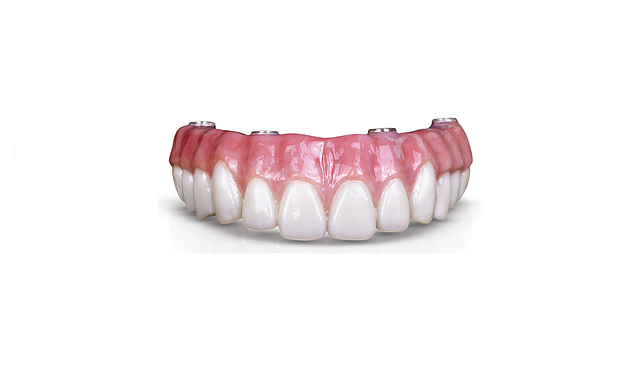Not known Facts About Dental Sense
Not known Facts About Dental Sense
Table of ContentsThe Definitive Guide to Dental Sense10 Simple Techniques For Dental SenseThe Single Strategy To Use For Dental SenseThe 7-Second Trick For Dental Sense
are clinical devices surgically dental implanted right into the jaw to bring back an individual's capacity to eat or their appearance. They give support for artificial (fake) teeth, such as crowns, bridges, or dentures. When a tooth is shed due to injury or illness, an individual can experience problems such as fast bone loss, defective speech, or adjustments to eating patterns that cause pain.Oral dental implant systems include an oral implant body and dental implant joint and might likewise consist of an abutment addiction screw. Wisdom tooth cavity. The dental implant body is operatively placed in the jawbone instead of the tooth's origin. The oral implant joint is usually attached to the dental implant body by the abutment addiction screw and prolongs through periodontals into the mouth to sustain the attached artificial teeth
(https://myanimelist.net/profile/dentalsense1)Structure of The Oral Implant System selecting oral implants, speak to your dental company concerning the possible advantages and threats, and whether you are a prospect for the procedure. Points to take into consideration: Your overall health and wellness is a crucial factor in figuring out whether you are a good candidate for oral implants, the length of time it will require to recover, and for how long the implant might remain in place.
Smoking cigarettes might impact the healing process and lower the long-term success of the dental implant. The healing process for the dental implant body may take several months or longer, throughout which time you typically have a momentary abutment instead of the tooth. the dental implant procedure: Thoroughly follow the dental health guidelines offered to you by your dental copyright.
Dental Sense Fundamentals Explained
Implant failing can lead to the need for one more operation to take care of or change the implant system. Brings back the capability to eat Brings back cosmetic appearance Assists keep the jawbone from diminishing due to bone loss Protects the health of the bordering bone and gums Helps maintain surrounding (neighboring) teeth steady Boosts lifestyle Damages to bordering natural teeth during dental implant placement Injury to the surrounding tissues throughout surgery, such as sinus opening Injury during surgical procedure (for instance, crack of bordering jawbone) Poor feature, such as really feeling like the teeth do not attack with each other normally A feeling that the tooth hangs or turning in location arising from an abutment screw loosening up Implant body failing (looseness of the implant body) as a result of systemic infection, which may be more probable in patients with unchecked diabetes because of local infection in bone and gum tissues supporting the dental implant body due to delayed recovery, which may be much more most likely in people who smoke Trouble cleaning up the gums around the implant, leading to bad oral health Neglected periodontal illness Post-surgical pins and needles due to nerve impingement or damages Constantly inform health and wellness treatment carriers and imaging technicians that you have oral implants prior to any type of magnetic resonance imaging (MRI) or x-ray procedures.
FDA is not aware of any damaging events reported for MRI or x-ray treatments with dental implants. Dental implants systems are commonly made of materials that follow global consensus standards of the International Company for Standardization (ISO) or ASTM International. These criteria have information of what makes a risk-free product.

A dental implant is a framework that replaces a missing out on tooth. With screw-like tools, the surgeon inserts a dental implant right into the jawbone, and it acts as an anchor for an artificial tooth, called a crown. A tool called a joint links the synthetic tooth to the oral implant. The crown is tailor-made to fit the person's mouth and match the color of their teeth.
More About Dental Sense
Some people are not eligible for dental implant surgery. It is for oral surgeons to run on individuals More about the author with: severe illnessuncontrollable metabolic diseasebone or soft cells disease or infectionIf these issues are resolved, an individual can have the surgery. In, dental cosmetic surgeons avoid operating individuals with: If people with any one of the above go through dental implant surgical procedure, there is a greater danger of the dental implant falling short.

Dental dental implant surgery is an individualized procedure. Offer you time to heal. Affix the article and last crown, bridge or denture.
Next, your specialist will very carefully put the dental implant right into your jaw. Your specialist will reposition your gum tissues and shut the laceration with stitches. If your dental implant is near the front of your mouth, your dental professional will make a short-term tooth for you to put on up until you heal. In this way, you won't have a gap in your smile while you recuperate.
5 Easy Facts About Dental Sense Explained
Your copyright can inform you what to expect in your circumstance. Throughout the healing phase, your jawbone ought to fuse to the oral implant. This procedure, called osseointegration, is critical for security and lasting success. This process can take anywhere from 3 to 9 months. In some instances, it may take longer.
When your implant heals, your dental practitioner can affix the abutment (tiny connector blog post) and your last restoration (crown, bridge or denture). This usually takes about one hour to finish and may need a second small surgery. You should not feel any type of discomfort throughout your dental implant procedure because your company will utilize medication to numb your gums.